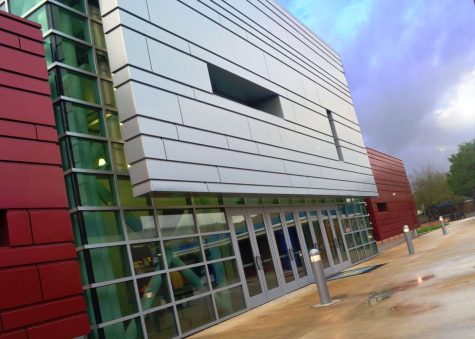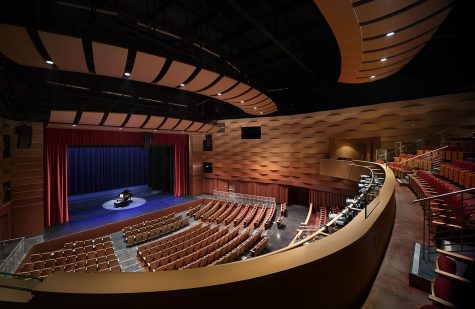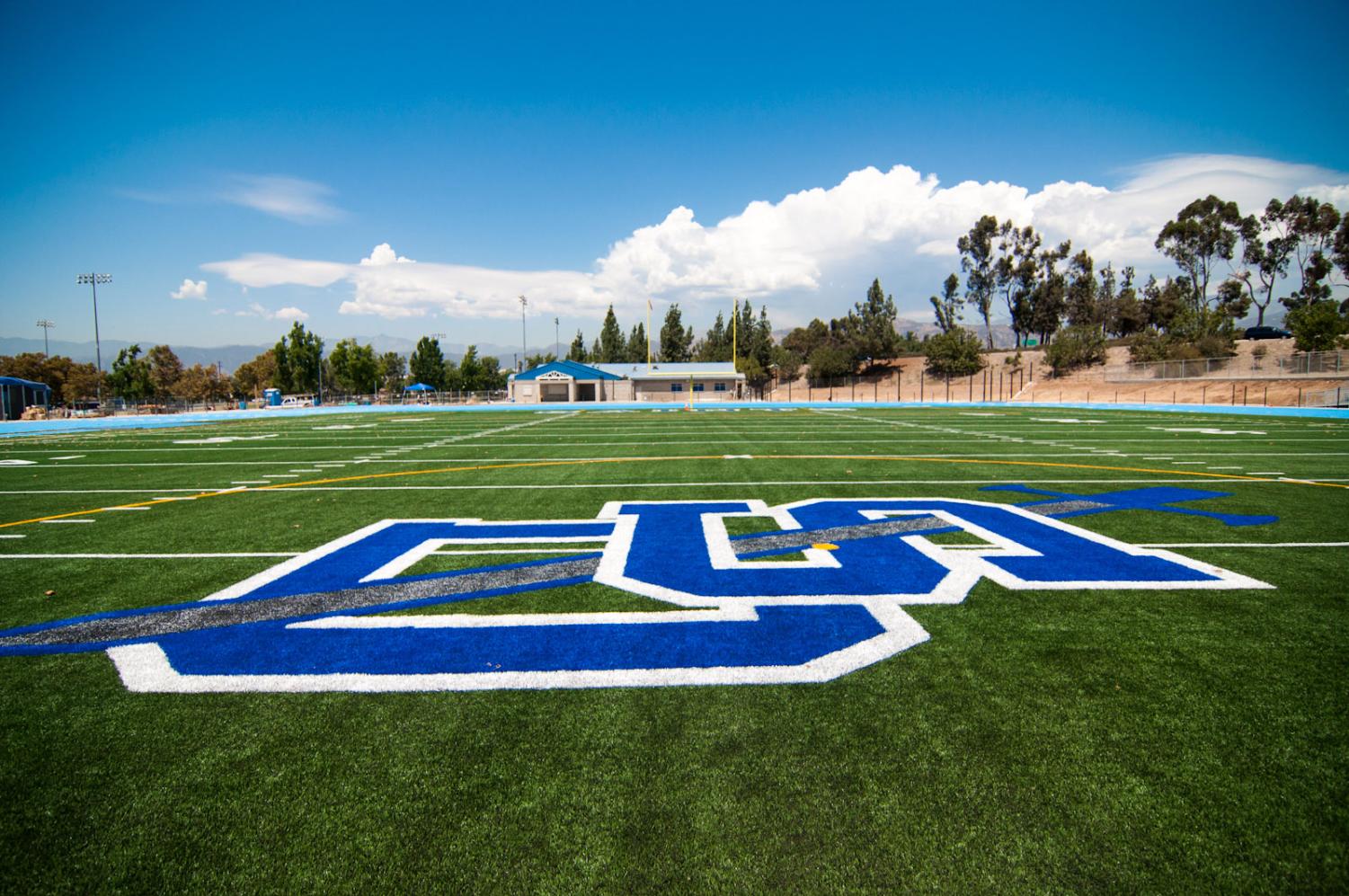The Funding Gap Between Sports and Arts Programs
Is There Really A Funding Gap and If So, Where Does It Lie?
March 25, 2022
San Dimas High School has numerous different extracurricular opportunities in many different fields. Almost every student at SDHS is in one of these groups, whether it be Band, Football, Choir, or Basketball. However, there is a commonly spread rumor that has wandered its way through the halls of this school for years. The rumor is that the arts department of the high school receives substantially less financial support than the athletic department. We at the Saint’s Scroll wanted to finally put this rumor to rest and figure out once and for all, is there a funding gap at San Dimas High School?
In order to investigate this rumor, we went to the different coaches and directors of the San Dimas arts and sports programs, in order to figure out the different types of funding sources that each group uses.
First, we spoke with Mr. Daniel Feola, the coach of the San Dimas High School Boy’s Water Polo and Swim teams.
When asked how his programs are supported, Feola responded with “If we wanna [sic] buy stuff, we have to fundraise for it”. Sports teams tend to use plenty of self-fundraising resources to pay for their respective seasons, including programs like SnapRaise, Fan Cloth, and “Adopt A Saint”. These student-ran fundraisers allow the sports teams to raise money for uniforms, equipment, and merchandise.
While we have now determined that most sports teams are generally self-funded, we still wonder, does the school provide money to sports programs? Feola once again helps to clear the air on this issue. “[ASB] pays for a tournament or a swim invite per season which is a couple hundred bucks”, Feola states, “say we have a budget of $15,000, two or three hundred of that is from ASB”.
Therefore it seems that the sports programs of the school have minimal financial support from ASB and are mostly self-funded, having to pay for their own yearly expenses.
To confirm these claims, we also talked to ASB Director, Mrs. Lisa Carson. According to a statement we received from Carson, “All of the teams/sports programs on campus have their own ASB accounts that they use to fundraise for their own expenses”. Carson also adds that sports teams are responsible for paying for their own tournaments, spirit packs, equipment, and more. However, Carson also states that ASB does in fact allot some funds towards sports programs.
According to the ASB budget, $1,450 in ASB financial resources are split between the different sports teams in order to pay for expenses such as “one varsity tournament per sport” and “an allotment of trophies for all teams”. ASB also pays for expenses needed to host home games. $82,700 goes into expenses such as Valle Vista League and CIF dues, Referees, and other stadium and gym workers.
This development seems to change the script slightly. We now know that the sports programs on campus are generally self-funded, but also have a large amount of financial support from ASB when it comes to luxury purchases. The idea of having free extra commodities for sports programs is expanded with the idea of transportation. Feola helps to give an insight into how sports programs deal with the cost of transportation. “We don’t have to pay for our bussing either,” says Feola.

Now that we have learned about the status quo in the funding of sports programs, it was time to turn to the arts department and learn more about how they are financed, and how their funding compares to the sports teams of San Dimas High.
To figure out how the arts department are supported, we turned to one of the San Dimas Royal Corps’ Band Directors, Daniel Sandt. After asking about the budget of the band program, Sandt told us that “$80,000 is our rough annual budget for running the band”. He also listed that $18,000, or roughly 22% of that comes from the District and school sources. The rest of the $62,000, or 77% comes from fundraising and ticket sales from band concerts. Similar to sports programs, the Band and many other arts programs on campus are majorly self-funded. However, they seem to have a larger percentage of their budget gathered from district resources.
This information presented a very surprising statistic. The art program of Band was actually getting a larger percentage of their budget from the district than the Boy’s Water Polo team. Did this mean that there was in fact a funding gap? And if so, is it possibly in favor of the arts department?
To further clear the air, we spoke with the head of the Drama Department, Ms. Kocalis. When asked about the amount of Drama’s budget that is provided by the school, she responded that “the school’s portion, $1,000, is less than 10% of our overall budget. There have been years where it is less than 5%”.
We then asked Kocalis about her thoughts on the rumor of there being a funding gap between the arts and sports departments. In her response, she gave a surprising statement. “I know there is, but it’s not where you think,” says Kocalis. She goes on to bring up the idea of stipends, which is a paid salary for the coaches and department heads of the school. “Coaches are paid per season of a sport”, says Kocalis, “what a varsity coach makes for one season of their sport is about equal to what I make per year as the theatre director”. Kocalis also brings up the fact that within sports programs, JV coaches and assistant coaches are paid a stipend by the school, while the drama department’s musical director and choreographer are not paid by the school, and their wages have to be fundraised by the theatre department. “It’s not even equitable between sports” states Kocalis.
Though on the contrary, according to the statement received by the ASB director, Mrs. Carson, “additional coach stipends” are listed under the expenses that sports teams must fundraise for, and are not provided by the ASB program or district funds.
Concerning the finances of arts programs, Carson also gives us one more piece of critical information to help decipher this issue. According to Carson’s statement, “[Arts Programs are] a different situation than sports programs when it comes to ASB money. Fine Arts/Performing Arts classes/programs are A-G Curriculum”. “ASB funds are not to pay for anything students get a grade for,” says Carson.

With all of this information, the funding gap dilemma seems to boil down to one general issue: there isn’t one. Every increase that one department has financially, the other has a different type of financial boost to counter the deficit that would’ve been created.
Yes, sports programs get free transportation and a larger amount of ASB support, but they are also responsible for a large portion of their budget. The expenses that ASB pays for in athletics are the bare minimum the group needs in order to have a competitive season.
And yes, while it is true the arts department receive a larger amount of funding from the district, not the school, this is because the Performing Arts at San Dimas High School are also A-G curriculum courses. ASB cannot provide funds to arts programs in the same manner as they do for sports programs because the arts give academic grades to their students at the end of the year. This would make the art department’s basic level funding a responsibility of the district. However, in many cases, the money given by the district is only enough to secure an academic course, not any extra performances, concerts, or competitive seasons.
It appears that there is no noticeable funding gap between the sports and arts departments at San Dimas High School. Most if not all of the extracurriculars at San Dimas are funded majorly by the students of the school. In the end, when it comes to the financial success of the many sports teams and arts ensembles at San Dimas High School, it’s all up to the students themselves to secure what they want for their programs.
Footnote: It is important to remember that with all this information, each program within our school is different, and while a single sports or arts program is a great example of how a department as a whole is run, it does not exactly represent each and every individual team or program within its respective department.

